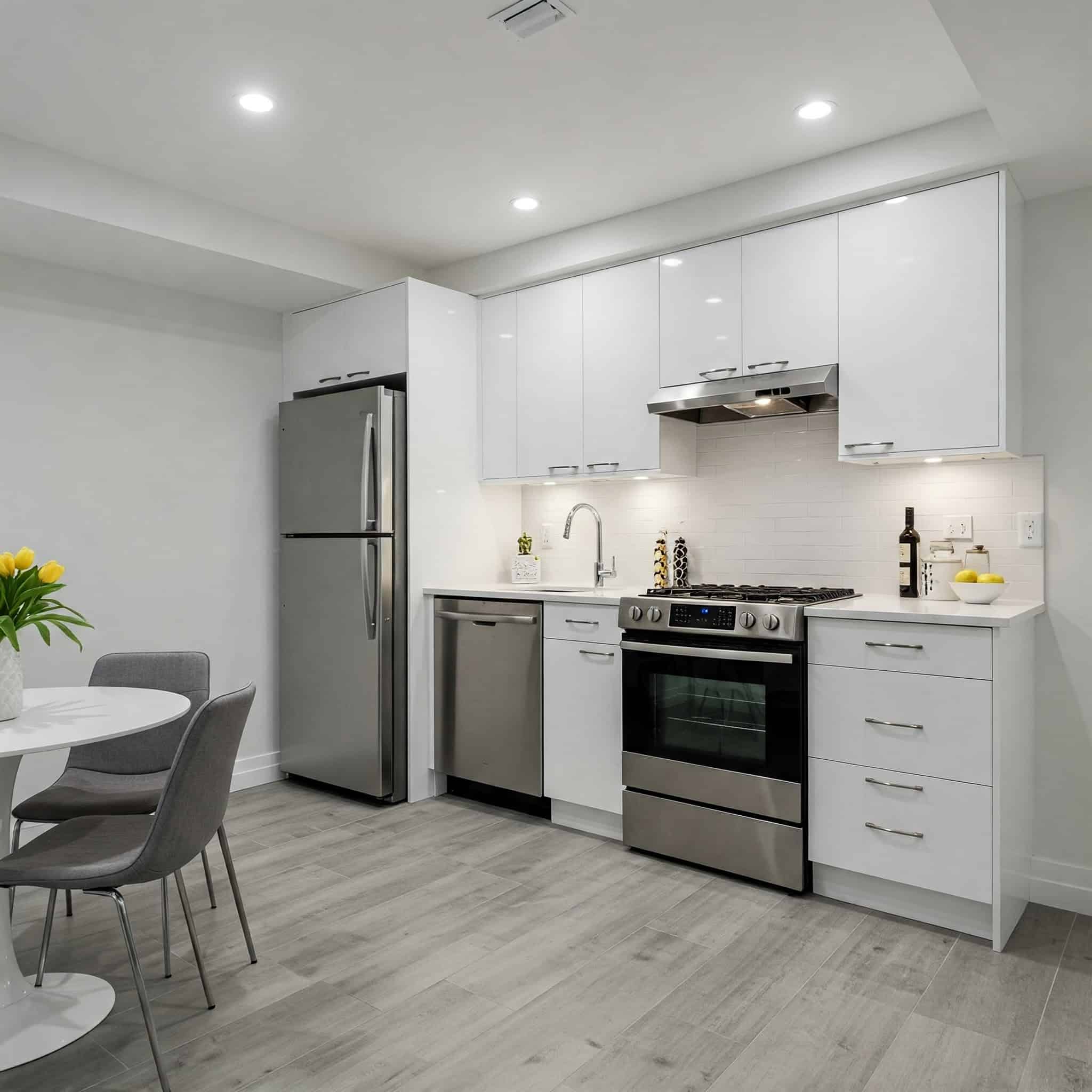
Question: How Do You Ventilate a Basement Kitchen?
Answer: To ventilate a basement kitchen install a range hood vented directly outside via ductwork. Consider an inline fan to boost power if needed. Ensure adequate make-up air supply.
Essential Basement Kitchen Ventilation
A well-ventilated basement kitchen improves air quality and comfort. This guide provides simple, effective ventilation strategies for basement kitchens, ensuring a healthy, pleasant cooking space. Whether you’re cooking, baking, or simply enjoying a meal, proper ventilation is crucial for maintaining a comfortable and healthy environment. Here are some effective strategies to ventilate your basement kitchen:
Range Hoods: Removing Cooking Fumes
Range hoods capture cooking fumes, grease, and moisture directly at the source. They expel these byproducts outside, preventing their circulation throughout your home. Choose a range hood with adequate power (CFM, cubic feet per minute) for your stove size and cooking style. Duct the range hood directly outdoors using the shortest, straightest path possible for optimal performance. Avoid recirculating range hoods, as these only filter the air and return it to the kitchen, failing to address moisture and odor problems.
Click here for more information on kitchen cabinet refacing Toronto
Related Article: Does a Cooktop Need a Vent?
Related Article: How Do You Stop Cooking Smells From Coming Through Vents?
Introducing Fresh Air
Balance exhaust systems with supply ventilation. Passive vents allow fresh air to enter the kitchen naturally, while active systems, such as a dedicated duct connected to your HVAC system, actively introduce fresh air. A balanced system prevents negative air pressure, improves overall air quality, and maintains a comfortable environment.
Dehumidifiers: Controlling Moisture
Basements are prone to moisture, and kitchen activities exacerbate this issue. A dehumidifier helps control moisture levels, preventing mold, mildew, and musty odors. Choose a dehumidifier sized for your basement’s square footage and run it regularly, especially during and after cooking. Empty the dehumidifier’s collection tank frequently or install a drainage system for continuous operation.
Natural Ventilation
When possible, open windows and doors to promote natural cross-ventilation. This simple action significantly improves air circulation and removes stale air. Consider installing operable windows near the kitchen area for easy access to fresh air. Combine natural ventilation with other methods for a comprehensive approach to basement kitchen ventilation.
Ensuring System Performance
Regular maintenance is crucial for maintaining optimal ventilation system performance. Clean range hood filters regularly to remove grease buildup. Check exhaust fan blades for dust accumulation and clean them periodically. Inspect and clean or replace HVAC filters according to manufacturer recommendations. This routine maintenance ensures your ventilation systems operate efficiently, protecting your home and health.
Conclusion
Proper ventilation is essential for a healthy and functional basement kitchen. By implementing these ventilation strategies, you create a comfortable cooking space free from excess moisture, odors, and pollutants, enhancing your overall home environment.

Blue Malue Get in touch with Blue here.
